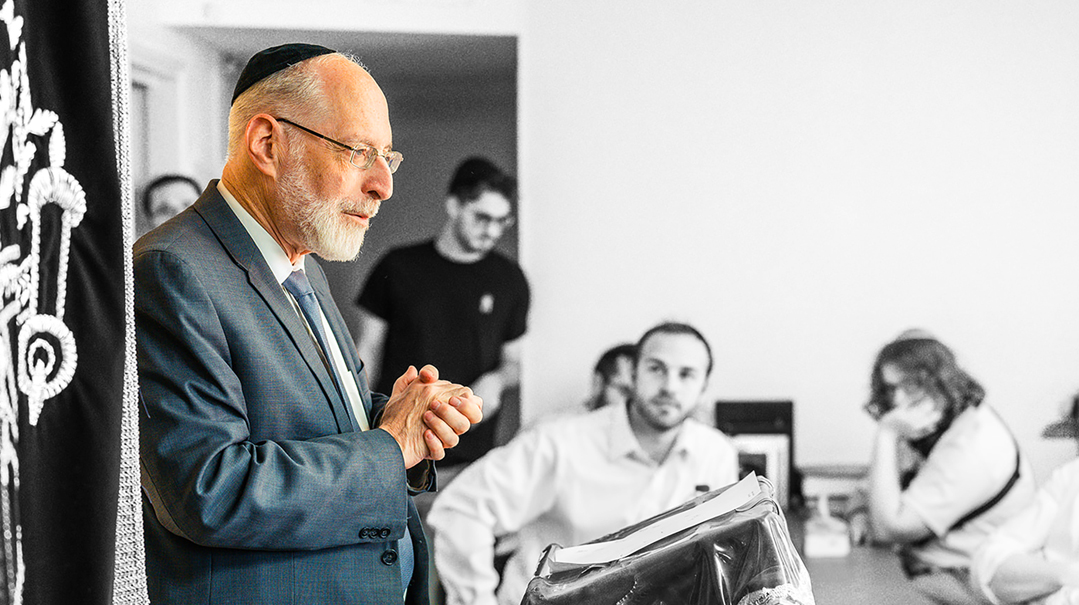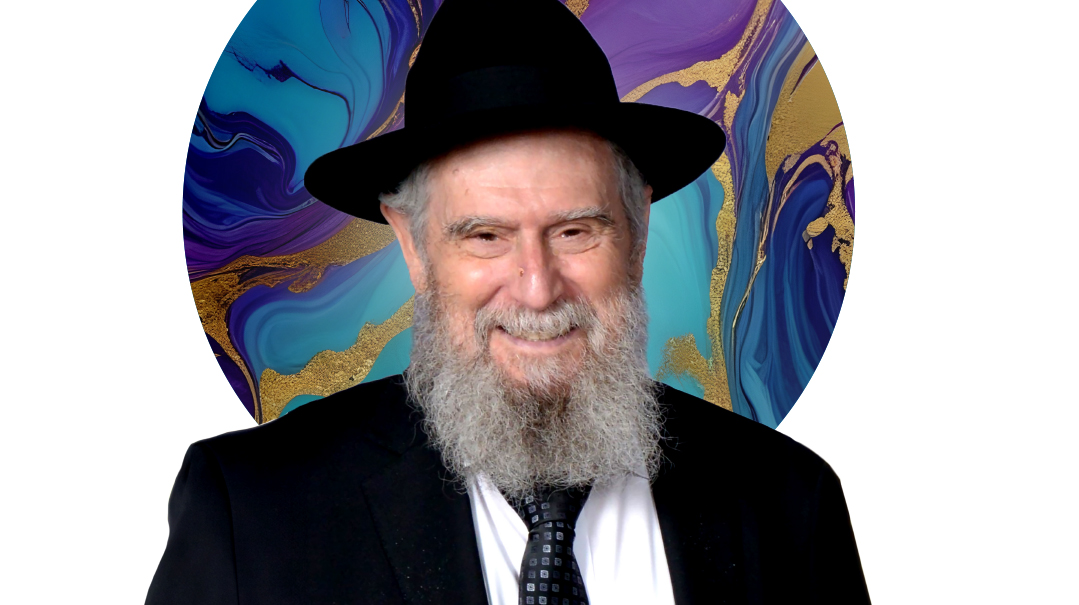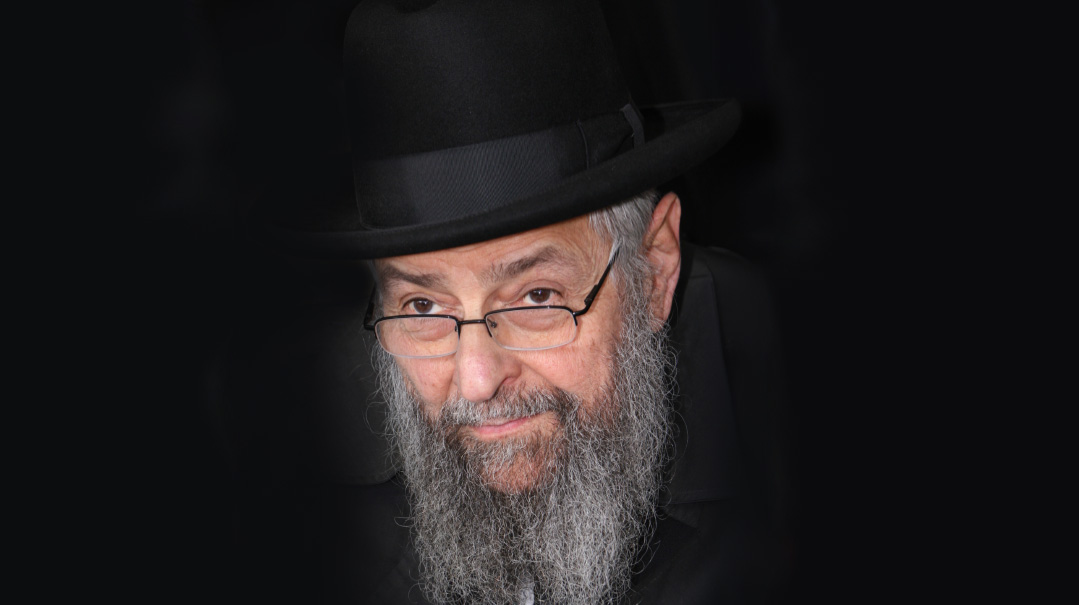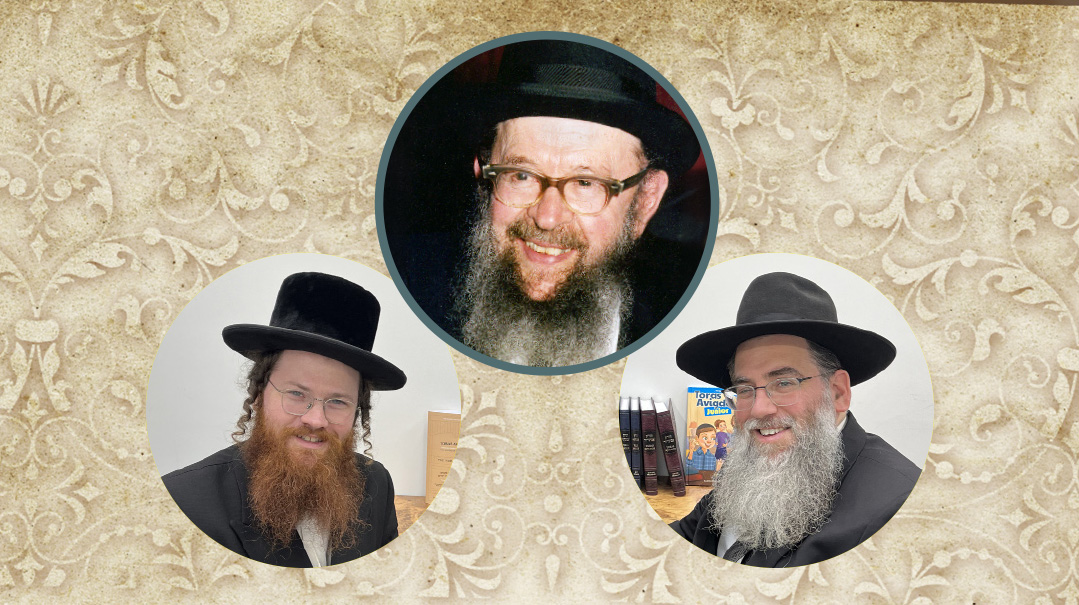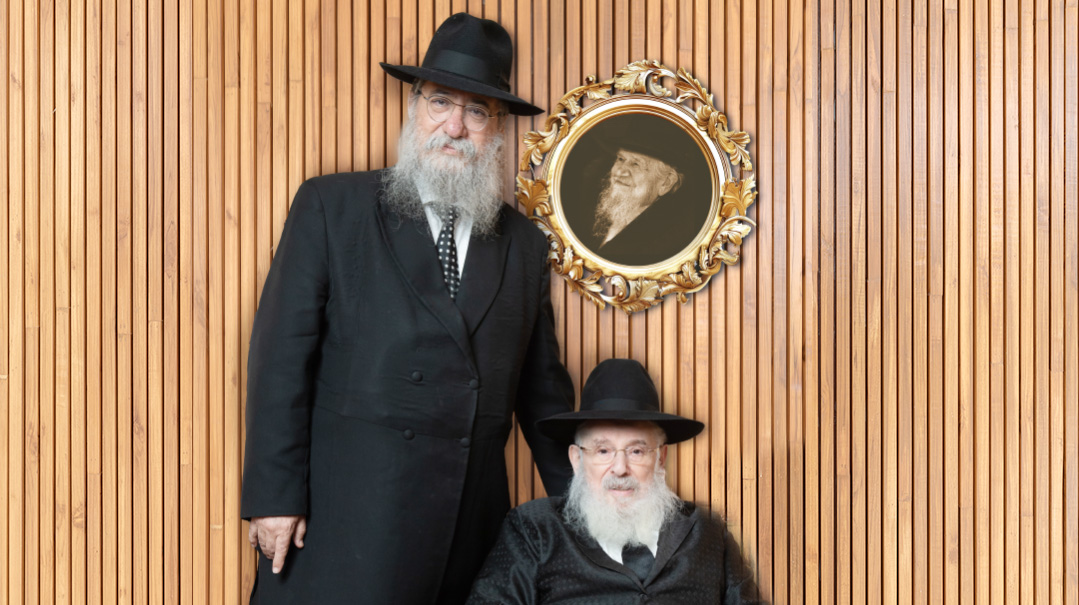A Reach Spanning Generations
| December 5, 2023The enduring impact of the Chazon Ish
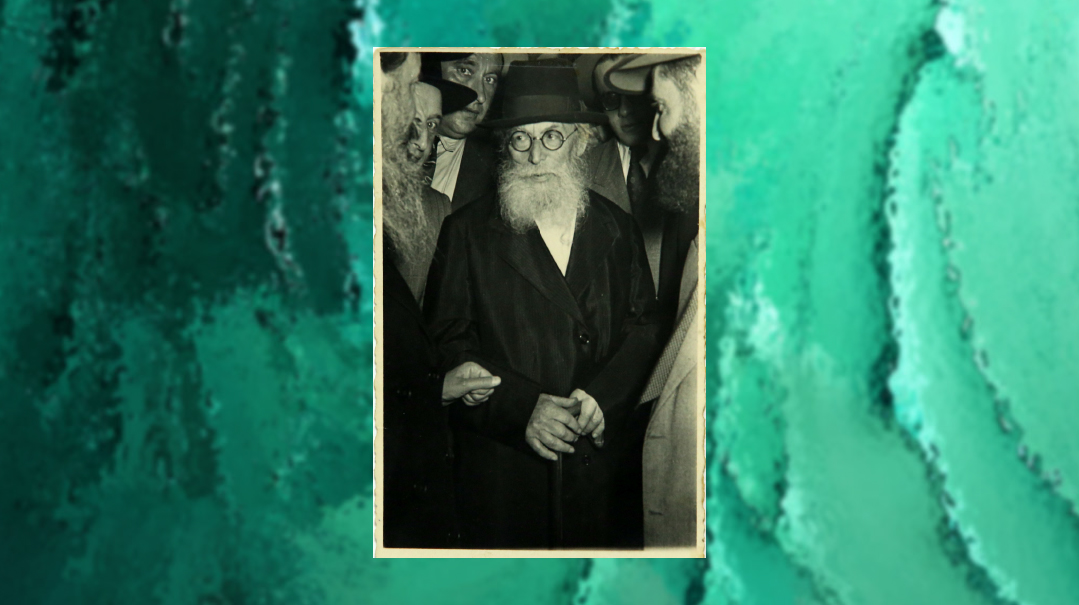
He guided Torah Jewry’s complex relationship with a vehemently secular state, created parameters for tenacious farmers to keep shemittah, tackled issues relating to Jewish service providers on Shabbos, and established a system of universally-accepted halachic measurements. Yet when the Chazon Ish came to Eretz Yisrael as a humble, anonymous avreich, no one even knew who he was
The Chazon Ish passed away decades ago, but his impact still permeates so many areas of frum life in Eretz Yisrael today. Far from a larger-than-life personality, this short, frail gadol was neither a rav or rosh yeshivah, and never sought the limelight. But his clarity in Torah, in both halachah and hashkafah, had Jews from all walks of life seeking him out.
He devised systems to help farmers keep Shabbos and shemittah, he redefined the halachic status of electricity, and identified esrogim whose pedigree wasn’t questionable, which are sought out even today. And the principles he formulated to navigate the divide between the religious and the secular still guide the fragile status quo. Seventy years after his petirah, a look back at the imprint of the gadol who shaped the halachic, hashkafic, and ideological contours of Eretz Yisrael until today.
Under His Wing
Rav Avraham Yeshayahu Karelitz was born in 1878 to an illustrious rabbinic Lithuanian family, but his path to greatness veered from that of many of his peers. While the vast majority of gedolim of the last century were products of the main yeshivos of prewar eastern Europe, the Chazon Ish, who began learning in a small yeshivah setting in Vilna under the guidance of Rav Chaim Ozer Grodzenski (though others are of the opinion that he set out to learn in Brisk under the Beis Halevi, Rav Yosef Dov Soloveitchik,) was only a yeshivah bochur for several days.
Scholars debate why this was so, some positing it was because of his strict adherence to the laws of chadash (which prohibit the consumption of wheat grain and consequently bread during certain months of the year), that proved difficult in a yeshivah setting. Others claim that the bochur, who was quiet by nature, was more comfortable with the solitude of his home.
This reticence was also evident in later years, as the Chazon Ish almost never spoke in public. This tendency seems to run in the family — it’s common knowledge in Bnei Brak until today that members of the extended Karelitz family never speak in public.
In any event, the Chazon Ish did not find his place in yeshivah, and generally learned by himself or from his father, Rav Shmaryahu Yosef Karelitz, the rav of Kosava.
The Chazon Ish also suffered from ill health from a very early age. In a frequently quoted letter, the Chazon Ish describes never having enjoyed anything in life “aside from doing Hashem’s will.” An additional sad chapter in his life relates to his marriage: The Chazon Ish realized early on that he would never merit to have a child with his wife.
Aside from dealing with his own heartbreak, the Chazon Ish was constantly concerned with boosting his wife’s spirits. Rav Menachem Cohen (rosh yeshivah of Toras Chaim, elder Ponevezh talmid and chairman of the Mishpacha rabbinical committee), who learned as a young bochur in a yeshivah ketanah in Bnei Brak, says that the Chazon Ish frequently asked him to come to the house and ask the Rebbetzin for food or to fix his clothing, in order to give her the joy of providing for a child.
In fact, the Chazon Ish’s childlessness may have contributed to his lifelong mission of taking young teenagers under his wing and caring for their spiritual upbringing. In the beginning these were local boys from his town, such as Rav Moshe Illovitzky-Cohen (Rav Menachem Cohen’s father) and others, including the famous Yiddish writer Chaim Grade, who described the Chazon Ish in glorifying terms in one of his novels, as the “Machzeh Avraham,” a play on words on “Chazon Ish.” Recently, a fascinating collection of letters to one of these children, later known as Dr. Tzvi Yehuda, was donated to the Israel National Library.
Later in life, he took his nephews under his wing, and they eventually became his premier talmidim, conveying his traditions and teachings to the next generation. These illustrious students included Rav Chaim Kanievsky (son of the Chazon Ish’s sister who married the Steipler); Rav Chaim Greineman (son of his sister who married Rav Shmuel Greineman, menahel of Yeshivas Tiferes Yerushalayim in Manhattan); Rav Nissim Karelitz (son of his sister who married Rav Nochum Meir Tzibolnik-Karelitz, who assumed his wife’s maiden name due to border concerns); and Rav Meir Greineman shlita, author of the multivolume Imrei Yosher on Shas and a younger brother of Rav Chaim Greineman. Rav Meir enjoyed a close relationship with the Chazon Ish, as his father traveled abroad frequently for klal endeavors. As a child, he spent several years in the Chazon Ish’s home in Vilna and then as a teenager in Bnei Brak.
Suddenly Sought
Ironically, considering the vast impact he had, the Chazon Ish never held an official rabbinic or teaching position. Aside from substituting for an exiled rav of Kweidan during World War I, the Chazon Ish was never rav of a town and some doubt whether he ever obtained semichah to be able to officiate as one. He spent the years following his marriage learning and helping his wife run their store. He also taught several local children and authored his magnum opus, the sefer Chazon Ish.
The sefer was written anonymously, with the only name appearing in it that of the Chazon Ish’s brother-in-law, Rav Shmuel Greineman, who assisted him in its publication. It was never meant to be used popularly, and it’s clear that the Chazon Ish did not compose this work for the average reader. He explained once to a family member that he wrote the final manuscript in a state of intense concentration, during which he reached utmost clarity of the sugya at hand. Accordingly, his sole concern at the time was to record his maskanah l’halachah — the practical ramifications of the sugya — and not to make his thought processes accessible to the general public. (It is reported that at times the Chazon Ish himself could not recall his true intention in his written words.)
How did this anonymous talmid chacham who resisted adding his name to his own sefer nevertheless become so prominent?
The first and most primary answer would be, as the Chazon Ish himself constantly emphasized, the very real power of Torah. In a famous letter, the Chazon Ish stresses that a talmid chacham influences his surroundings just by living in the vicinity. He was certain that publishing his rulings in his sefer would influence the public to greater observance of the mitzvos involved.
Another factor that played a major role in the community’s recognition of the Chazon Ish as a leading posek was his connection to the gadol hador, Rav Chaim Ozer Grodzenski. The Chazon Ish lived near Vilna (and for a certain period in Vilna itself), and Rav Chaim Ozer “discovered” the Chazon Ish early on. He consulted him on many matters of halachah, and when meetings of gedolim were held in his home, Reb Chaim Ozer made sure that the Chazon Ish was present in the room, despite his relative youth, and recurrently asked him for his opinion.
When Rabbi Moshe Blau, the legendary political leader of the Agudah in Eretz Yisrael visited Vilna, Reb Chaim Ozer asked him if he already had met the “jewel” of Vilna, referring to the Chazon Ish, who was still a young, anonymous talmid chacham. Subsequently, Rabbi Blau would play a role in arranging the Chazon Ish’s aliyah to Eretz Yisrael. In fact, Rabbi Blau wished to appoint the Chazon Ish as the rav of Yerushalayim, but he declined the offer.
Rav Chaim Ozer also shared his admiration for the Chazon Ish with the famed mashgiach of the Mir, Rav Yechezkel (Chatzkel) Levenstein, which would prove to be crucial later on. During World War II, the refugee community in Kobe, Japan, which included many talmidim of the Mir Yeshivah from Poland, was rocked by conflict relating to the international dateline dispute. Resolution was imperative to determine when they should observe Shabbos and Yom Kippur. Telegrams were sent to several gedolim in Eretz Yisrael, including the Chazon Ish, but they did not agree on one halachic solution.
At that point, Reb Chatzkel convened a meeting of the Mirrer talmidim and conveyed to them a message he personally heard from Reb Chaim Ozer. In each and every generation, said Reb Chaim Ozer, there is one person who is capable of deciding the most difficult halachic questions of the time. In our generation, continued Reb Chaim Ozer, this person is the Chazon Ish. And indeed, refugees testified that Reb Chatzkel publicly wore tefillin on the day that others kept as Shabbos, in deference to the Chazon Ish’s ruling.
Rav Yechiel Michel Tukachinsky of Yerushalayim was also one of the gedolim consulted about this question, and he subsequently summarized this episode and his opinion on the matter in his sefer HaYomam. In it, he expressed his amazement that a person thoroughly knowledgeable on such an obscure area of halachah even existed. “Would I have known that such a talmid chacham existed, I would have not addressed the issue publicly without first discussing the matter with him,” he wrote.
After the international dateline saga, the Chazon Ish was thrust into the limelight, soon recognized as one of the foremost poskim of the era. From this point onward, his influence would be felt regarding practically all areas of halachah in Eretz Yisrael. And this is aside from his hashkafic impact on frum Jewry’s complex relationship with a vehemently secular establishment, his guidelines still influencing current politics and policy. The following is a list of the primary areas in which the Chazon Ish shaped policy and decision in ways that still impact frum Jewry in Eretz Yisrael today.
Agricultural Halachah
Several decades ago, a respected scholar and researcher shared with me the contents of a discussion he held with the last remaining founding members of Kibbutz Chofetz Chaim, one of the first frum kibbutzim to be established by Poalei Agudas Yisrael. The olim who settled the kibbutz were G-d fearing Jews, and they encountered many halachic issues while trying to establish their initial agricultural endeavors. They realized that they would need constant halachic guidance.
At first, they would travel to Yerushalayim to consult with the rabbanim of the Eidah Hachareidis. However, they felt the disparity of mentality between the German-born olim and the Hungarian and Yerushalmi rabbanim was inhibiting a workable relationship. Desperate for guidance, they turned to Reb Chaim Ozer, who in turn recommended that they seek out the Chazon Ish, who had recently made aliyah and settled in a small town called Bnei Brak.
These founding members described their frustration at trying to track down the Chazon Ish in Bnei Brak. “No one, it seemed, knew who we were referring to,” they remarked. Finally, one resident thought he could help. “You must be looking for Reb Shaya, who lives in the small house down the road,” he said. These directions turned out to be a lifesaver for the kibbutz members and a gift for all of Klal Yisrael.
The Chazon Ish greeted them warmly and listened intently to the complex agricultural halachic dilemmas they raised. They were pleasantly surprised that the Chazon Ish was completely familiar with the facts on the ground, and proceeded to give them detailed, practical halachic advice. Subsequently, Rav Kalman Kahane, the longtime rav of the kibbutz (and eventually also a member of the Knesset) served as an intermediary between the Chazon Ish and the kibbutz initiative speared by the Poalei Agudas Yisrael movement. The Chazon Ish became the final word for frum kibbutzim such as Chofetz Chaim, Yesodot, Yad Binyamin, Sha’alvim, Beit Chilkiya, and others.
Even in more recent years, when the kibbutz was populated mainly by dati-leumi families, they still strictly adhered to the psakim of the Chazon Ish in relation to the laws of shemittah.
There is in fact a common misconception in relation to the famous controversy relating to heter mechirah. The assumption is that Rav Avraham Yitzchak HaKohen Kook, the first chief rabbi of Israel, was lenient in relation to shemittah while the Chazon Ish was stringent. This notion stems from the fact that Rav Kook initiated the heter mechirah (a leniency which allows for selling the land to an Arab during shemittah, thereby permitting certain acts of cultivation) while the Chazon Ish repeatedly opposed it until the end of his life. The truth, however, is far more complex.
The Chazon Ish searched for every loophole possible in order to allow those who keep shemittah (and do not sell their land) to survive. Rav Kook, on the other hand, refused to accept these leniencies, and was therefore compelled to offer the alternate solution of selling the land to a gentile (preferably an Arab who is not halachically considered an idol worshipper).
As an example, the Chazon Ish was a proponent of the Otzar Beis Din system. One of the major challenges of shemittah observers is the prohibition to sell fruit that was planted before shemittah but harvested afterward. The Torah says that these fruits are hefker (ownerless), free to be taken from the orchard by anyone.
There is a Tosefta that says that the owner can recoup some of the loss involved by giving beis din full rights to appropriate the entire harvest and distribute it to the populace. The beis din then may charge the populace for basic expenses such as transporting the fruit. Under the auspices of such an arrangement, the farmers are paid as hired workers of the beis din for packaging and transporting the produce, and earn a somewhat steady salary.
However, while some Rishonim cite this Tosefta, others, such as the Rambam, ignore this source. As a result, the beis din of the Eidah Hachareidis employs this solution only with regard to esrogim, as there is no other viable option to supply the populace with esrogim for Succos. The Chazon Ish, however, adopted this solution for all types of fruit on the market. This is only one example of a major innovation of the Chazon Ish that profoundly impacted shemittah observers.
The Chazon Ish did not actively promote his halachic views, but nevertheless, between his seforim, written correspondence, and in-person response to those who asked him questions, his influence rapidly spread. Many farming communities kept shemittah due to his guidance. In fact, in the last shemittah year the majority of Jewish-owned lands in Eretz Yisrael were at rest, due to the direct influence of the Chazon Ish decades ago.
The Chazon Ish’s impact on agricultural halachos related to Eretz Yisrael was not limited to the laws of shemittah. He repeatedly stressed the importance of being fluent in the halachos of tithing (terumos u’maasros), even formulating one standard nusach that would streamline the process for the average homeowner, which was eventually printed in the back of the siddurim sold in Eretz Yisrael. Here, too, some poskim expressed surprise at what they viewed as another leniency (as the original halachah was to use a different nusach for each type of terumah and maaser).
In addition, he repeatedly encouraged people to take maaser from every food item before eating, even one with a hechsher. (In such cases, the maaser is done without a brachah.) Rav Menachem Cohen recently recounted a childhood memory of visiting the Chazon Ish with his father and sister. When the Rebbetzin offered the guests fresh fruit, the little girl ran over to her father asking if the fruit was “gemaasered” (if maaser had been separated from them). Upon seeing that his efforts to spread awareness of this halachic issue had succeeded, says Rav Cohen, the Chazon Ish’s joy was boundless.
Shabbos Stringencies
The Chazon Ish made significant inroads to strengthen Shabbos observance in in Eretz Yisrael. One notable saga involved, once again, Kibbutz Chofetz Chaim, though it eventually impacted all farms owned by or catering to observant Jews.
As milking a cow involves dash, one of the 39 melachos prohibited on Shabbos, a cattle owner must find a solution. (Skipping milking isn’t an option due to the great distress caused to a cow that isn’t milked on time.) The preferable solution is to have a non-Jew milk the cow. This solution, however, proved problematic in the early years of the state because of a nationwide campaign encouraging farmers to only hire Jewish laborers.
Another proposed solution called for a Jew to milk the cow directly onto the ground, or use some other means to make the milk unfit for consumption. However, this would cause a tremendous loss to the farmers who were already struggling. Consequently, there were farmers who relied on a particular leniency that allowed them to milk the cows using a Jewish worker and still use the milk.
The Chazon Ish was strongly opposed to what he believed was a breach in halachah and searched for other solutions. When Kibbutz Chofetz Chaim constructed the first automated milking machine, based on a Shabbos-clock-type solution, their rabbanim, Rav Moshe Peles and Rav Kalman Kahane sought the Chazon Ish’s approval. He granted his blessing, and while this first version would be modified through the years, it paved the way for this ingenious solution in other dairies as well.
Another area in which the Chazon Ish’s impact is felt until today is in the area of electricity manufactured by Jews for Jews. In Eretz Yisrael, the country’s central power supplier is staffed by Jewish workers. And while other poskim permitted the usage of this electricity on the grounds that a central power supply can be lifesaving in situations involving homebound critically ill people, hospitals, and security concerns, the Chazon Ish felt that such a public display of chillul Shabbos, compounded by frum Jews using this electricity, constituted a chillul Hashem.
Until today, staunch Chazon Ish adherents use only gas-powered lamps on Shabbos, while others avoid this issue by using only electricity manufactured by local, privately-owned generators (which do not involve maintenance on Shabbos itself). In recognition of this, the recent Israeli government coalition agreement included a clause that would solve this issue permanently, rendering all of Israel’s electricity kosher l’mehadrin.
The Chazon Ish also redefined the halachic approach to electricity, dramatically changing the halachic outlook on using electricity on Shabbos around the world. From the advent of electricity, the accepted halachic approach was that the filament that exists in every incandescent (old style) lightbulb constitutes “fire” when the electric circuit is completed and the light goes on. In fact, the story is told that Reb Chaim Ozer made a point of reciting borei me’orei ha’eish during Havdalah on a light bulb to emphasize that turning on a light bulb constitutes igniting fire on Shabbos.
The more complex issue is the status of completing an electric circuit in the absence of a filament, for example, turning on a simple electric fan. In this case, the electric current that is activated upon completing a circuit powers the fan but does not ignite any sort of flame.
Until the Chazon Ish voiced his opinion, the common understanding was that this would constitute an issur d’Rabbanan. The Chazon Ish, however, maintained that the fact that the electrical current (activated by the completed circuit) springs a stagnant machine into life is sufficient to define the creation of the current as the melachah d’Oraisa of boneh. And the difference between defining an action as rabbinically prohibited or as biblically prohibited results in many practical ramifications. Poskim dealing with electrical appliances on Shabbos today, including modern day inventions, generally incorporate the opinion of the Chazon Ish in their deliberations before reaching a final decision.
First, a brief mention of the opinion of the Chazon Ish in relation to keeping food warm on Shabbos: While many use a blech (a slate of tin or aluminum which covers the gas range) or an electric hotplate (plata), the Chazon Ish refused to endorse this solution. He maintained that these solutions did not resemble the solution mentioned by the Sages of the Talmud known as grufa veketuma. Consequently, many people today, particularly in Bnei Brak, will not use these devices in order to keep food warm on Shabbos.
No Grafts
Upon his arrival in Eretz Yisrael in the 1930s, the Chazon Ish discovered what he perceived as major breach in halachah regarding the purchase of arba minim for Succos. It was common knowledge that there were esrog growers who would graft their trees with other citrus fruit trees (to boost the sturdiness and appearance of the fruit), but despite the halachic compromise involved, the general observant populace did not seem to be concerned.
Since the opinion of the majority of earlier poskim and the contemporary accepted psak was that esrogim growing on such grafted trees (murkavim) were not halachically valid, the Chazon Ish set out to find an esrog tree that had never been grafted with another citrus tree, which he did. Rav Dov Landau, one of the present gedolei hador, recently testified that while many attributed the Chazon Ish’s find to ruach hakodesh, it was actually a result of his dedication to the search.
Upon closely inspecting a tree planted in a remote orchard in Nachal Amud near Tzfas, the Chazon Ish discerned that the orchard had not been tampered with for many years. He bought several esrogim from the orchard’s Arab owner and took several branches from these trees as well. He then passed on these branches to a few talmidim who in turn planted and cultivated orchards of their own, which fill the high demand for esrogei zan Chazon Ish until today.
Measure for Measure
The greatest impact of the Chazon Ish on any given individual nowadays undoubtedly relates to his contribution to the age-old controversy regarding the precise required measurements for halachic matters. The basis for this complex issue is the fact that the Gemara provides us with two means of measuring any given item to assess if it complies with halachic requirements.
One measurement involves volume — the volume of an egg. A second method involved a different dimension — the width of a thumb. Theoretically speaking, since both means of measurement were provided for the same set of mitzvos, we would expect them to come out the same. However, the Noda B’Yehuda (Rav Yechezkel Landau, a renowned posek who lived in the 1700s) discovered that this was not so. A simple calculation found that using a modern-day thumb would result in double the volume of the result based on the volume of a standard egg.
There are two ways to solve this paradox: We may assume that the standard egg nowadays is half of the volume of a standard egg in the times of the Talmud. Alternatively, we may assume that the width of a standard thumb nowadays is double the width of a thumb in the times of the Talmud.
The Chazon Ish adopted the first approach (following the Noda B’Yehuda), while Rav Avraham Chaim Naeh (a prominent rav in Yerushalayim) adopted the latter, significantly more lenient approach, stating that it was the practice in Yerushalayim for centuries. Many in the yeshivah world strive to follow the Chazon Ish on this matter whenever possible.
Navigating the Divide
In order to gain a greater appreciation of the pivotal role played by the Chazon Ish in the formative years of the newly founded State of Israel, a relevant backdrop is in order. Until the arrival of the Chazon Ish on the shores of Israel, the central halachic and hashkafic authority was the Badatz of the Eidah Hachareidis, based in Yerushalayim.
The original leaders were of Lithuanian origin, such as Rav Yehoshua Leib Diskin, former rav of Brisk, and Rav Shmuel Salant (son in law of Rav Zundel, a prime talmid of the Vilna Gaon). But at a certain point the Badatz stewardship shifted to Hungarian rabbinic leaders, beginning with Rav Yosef Chaim Sonnenfeld, himself a talmid of the Ksav Sofer, moving to Rav Yosef Tzvi Dushinsky, the former rav of Galanta, Hungary, and later to the Rebbe Rav Yoel of Satmar, who led long distance from overseas.
Things dramatically changed with the influx of yeshivos and immigrants from Europe to Eretz Yisrael before and after World War II. These frum immigrants were guided by the European roshei yeshivah and chassidic rebbes. At a certain point a new official leadership entity emerged with the creation of the Israeli Moetzes Gedolei HaTorah.
Although the Chazon Ish never was a member of the Moetzes, his voice was the dominant one in relation to any major decision during the years preceding and following the founding of the state in 1948. More importantly, the Chazon Ish codified a comprehensive response and attitude toward secular Jews and a secular government. These statements of the Chazon Ish guide all frum politicians and public figures until this very day.
In several places, the Gemara lists very strict rules in relation to Jews who publicly transgress the laws of the Torah. It’s only because of the Chazon Ish that we don’t relate this way to secular Jews today. He laid down two significant principles that change the picture entirely.
Firstly, he writes (Chazon Ish Yoreh Dei’ah 2:16) that these strict measures are only helpful when G-d openly intervenes in the running of the world (Hashgachas Hashem giluyah) and the evildoers nevertheless wish to weaken Torah observance. In such cases, the only way to prevent a general spiritual decline was to punish the transgressors.
However, he says, in times of hester panim, when Hashem’s ways are hidden and observant Jews are in the minority, such actions will bring about the opposite results and distance many more from Yiddishkeit. The only solution, writes the Chazon Ish, is to bring them back with “thick ropes of love.”
The second principle relates to the halachic definition of the secular Jew today. The Chazon Ish (and several poskim before his time) gave these Jews the halachic status of “tinok shenishba” (Shabbos 68b). Originally, this term refers to a Jew who was taken captive at a young age and raised as a gentile, however, the Chazon Ish and others were of the opinion that a Jew raised in an anti-Torah atmosphere is no different. Incidentally, Rav Gershon Edelstein, who was close to the Chazon Ish, expanded this concept to include off-the-derech youth. These principles dramatically changed the relationship between frum Jewry in Eretz Yisrael and their secular brethren and laid down the framework for the massive kiruv movement spearheaded by chareidi society in the last several decades.
A separate challenge in the Chazon Ish’s time was formulating the proper response to a secular government that did all it could to secularize Israeli society. Aside from the endless clashes with the chareidi public, the establishment wished to actively influence olim from eastern countries, at times preventing them from receiving a Torah education.
The Chazon Ish laid down clear guidelines in relation to this issue as well. Firstly, he was strongly opposed to any sort of violence as a means of achieving positive results. In fact, in his book In Their Shadow, Rabbi Shlomo Lorincz, a veteran member of the Knesset representing Agudas Yisrael, shares that the Chazon Ish toned down and at times totally vetoed fiery speeches that he had prepared to deliver from the Knesset lectern.
The influence of the Chazon Ish on the secular-religious divide after the establishment of the state is probably best encapsuled by describing the pivotal meeting that took place on the 20th of October, 1952. Fierce controversy raged around the law obligating all females to enlist for army service, and Prime Minister David Ben Gurion asked for a private meeting with the Chazon Ish. Present at the actual meeting where only three individuals: the Chazon Ish, Ben Gurion, and his personal secretary Yitzchak Navon (who later became president of Israel). While the precise details of the meeting remain unclear, one notable exchange has been etched in the mindset of Israelis secular and religious alike.
Ben Gurion posed a question to the Chazon Ish: “How are we, as a nation, to survive if we all feel as if our society is about to explode [referring to the tensions between secular and religious Jews]?”
The Chazon Ish countered with the now-famous parable mentioned by Chazal (Sanhedrin 32b): “… If two camels meet each other while on the ascent to Beth-Choron [a narrow pathway]; if they both ascend [at the same time] both may tumble down [into the valley]; but if [they ascend] after each other, both can go up [safely]. How then should they act? If one is laden and the other unladen, the latter should give way to the former.”
The Chazon Ish then made the parallel that since Torah observant Jewry is laden with the burden of Torah and mitzvos, secular society must give them the right of way in cases of dispute. Ben Gurion was very disturbed by this parable and refused to accept the notion that secular Jews are not laden with their own form of ethics. However, Ben Gurion later wrote in his diary that the meeting was a pleasant one, and although “his mannerism was pleasant, he had a certain zealousness in his personality.”
Two results emerged from this historical meeting. First, any girl can get a draft exemption on religious grounds. Second, Ben Gurion was truly impressed by the Chazon Ish, “the cleverest person he ever met” (as quoted by Rabbi Shlomo Lorincz). The Chazon Ish used the relationship kindled at this meeting to turn to Ben Gurion when necessary.
The contents of this meeting and the parable cited by the Chazon Ish continue to accompany the secular-religious dialogue until this very day. Most recently, the communications minister of the Bennet government, Yoaz Hendel, mentioned the parable in a meeting with several gedolim two years ago, as he tried to convince the participants of its inaccuracy.
Don’t Fight, Build
The Chazon Ish repeatedly stressed that the only way to combat the secularism spearheaded by the liberal Israeli government was through building another Talmud Torah and another yeshivah. He maintained that the influence of these Torah institutions would reach outward, and ultimately save and expand frum Jewry in Eretz Yisrael. When Rebbe Yoel of Satmar visited the Chazon Ish in Bnei Brak, he shared his viewpoint with the Rebbe.
The Rebbe, who was fiercely ideologically opposed to the State of Israel, pointed to the passage in the Rambam (Hilchos Dei’os 6:1) stating: “If they are wicked and sinful and do not allow him to reside there unless he mingles with them and follows their evil behavior, he should go out to caves, thickets, and deserts [rather than] follow the paths of sinners.”
“How can one reside in Israel if there is such a campaign against Yiddishkeit?” asked the Rebbe.
“The yeshivos and batei medrash are the ‘deserts’ that are mentioned in the Rambam,” the Chazon Ish responded. Then he added, “I tell you, the only thing that we can do until Mashiach arrives is to establish one more Talmud Torah, one more yeshivah, and one more Torah shiur.”
As part of his strong belief that establishing Talmudei Torah was the proper way to combat secularism, the Chazon Ish was willing to forego an age old cherem (ban) instituted in Yerushalayim, which forbade teaching young students in Ivrit, which at the time was a sign of modernism. The Chazon Ish, who encouraged activists to open new Torah schools in the Yishuv Hachadash outside Yerushalayim, allowed Ivrit to be used in the schools. The famous rationale cited in his name was that one cannot win current wars with ammunition used in wars during earlier periods in history.
This tendency of the Chazon Ish to see the wider picture instead of safeguarding specifics played out once again in relation to his attitude toward the Rabbanut. Although no great fan of several lenient rulings issued by the Rabbanut, the Chazon Ish encouraged many of his talmidim to enter Israel’s official rabbinate, at times sending them off to far-flung communities with no frum infrastructure in place at all. These included Rav Yaacov Edelstein, chief rabbi of Ramat Hasharon (brother of Rav Gershon Edelstein), Rav Yechiel Yaacobovitz, chief rabbi of Herzliya, and many others. In a letter written to Rav Elchanan Wasserman, the Chazon Ish explained that the key to successful kiruv efforts in the new yishuv hinged on a good local rav, even if he was under the jurisdiction of the Rabbanut.
(Originally featured in Mishpacha, Issue 989)
Oops! We could not locate your form.

